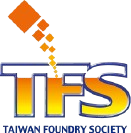摘 要
本研究採用含1%Mo球墨鑄鐵(DI)為實驗材料,對其進行沃斯回火處理後得到沃斯回火球墨鑄鐵(ADI),然後針對這兩種塊材試片分別使用不同對磨材(WC、Al2O3)及不同荷重(2N、5N、8N)以Ball-on-disk方式進行磨耗試驗,可獲得不同磨耗條件下之摩擦係數及磨耗率,並以FESEM觀察試片磨耗軌跡,來探討DI及ADI磨耗性質的差異性。
實驗結果顯示,當使用Al2O3磨球時,隨著荷重的增加,DI及ADI的摩擦係數會降低,但磨耗率都會增加,分別是DI(3.5x10-7è9.2x10-7 g/m)及ADI(5.7x10-7è1.4x10-6 g/m)。當使用更硬質的WC磨球時,隨著荷重的增加,DI的摩擦係數會降低,而ADI的摩擦係數會增加,推斷應是ADI基材硬度相對較高所致。然而其對磨耗率之影響,ADI的磨耗率會隨荷重增加而增加(8.3x10-8è1.7x10-6 g/m),但對於DI則影響不大(~6.7x10-8 g/m)。關鍵詞:球墨鑄鐵、沃斯回火、對磨球、磨耗荷重、磨耗性質
ABSTRACT
In this study, the ductile iron (DI) containing 1% Mo was used as the experimental material, and obtained austempered ductile iron (ADI) after austempering treatment. Then the wear tests were carried out with different abrasive balls (WC, Al2O3) and different loads (2N, 5N, 8N) in the Ball-on-disk method to obtain the friction coefficients and the wear rate under different abrasion conditions, and then observed the abrasion trajectory of specimens by FESEM to investigate the difference between the abrasion properties of DI and ADI.
The experimental results revealed that when employing Al2O3 grinding balls, it's observed that the friction coefficients of both DI and ADI decreased as the load increased. However, the wear rates exhibited different behaviors; for DI, they escalated from 3.5x10-7 to 9.2x10-7 g/m, whereas for ADI, they increased from 5.7x10-7 to 1.4x10-6 g/m with increasing load. Conversely, when employing harder WC balls had a distinct difference. For DI, the coefficient of friction diminished, whereas for ADI, it rised as the load increased. This phenomenon was likely attributable to the relatively higher hardness of the ADI substrate. Furthermore, the impact on the abrasion rate intensified with increasing load, with ADI experiencing an increase from 8.3x10-8 to 1.7x10-6 g/m, whereas DI maintained a relatively consistent rate of around 6.7x10-8 g/m, without significant variations for loading increase.Keywords: Ductile iron, Austempering, Abrasive ball, Wear load, Abrasion property
